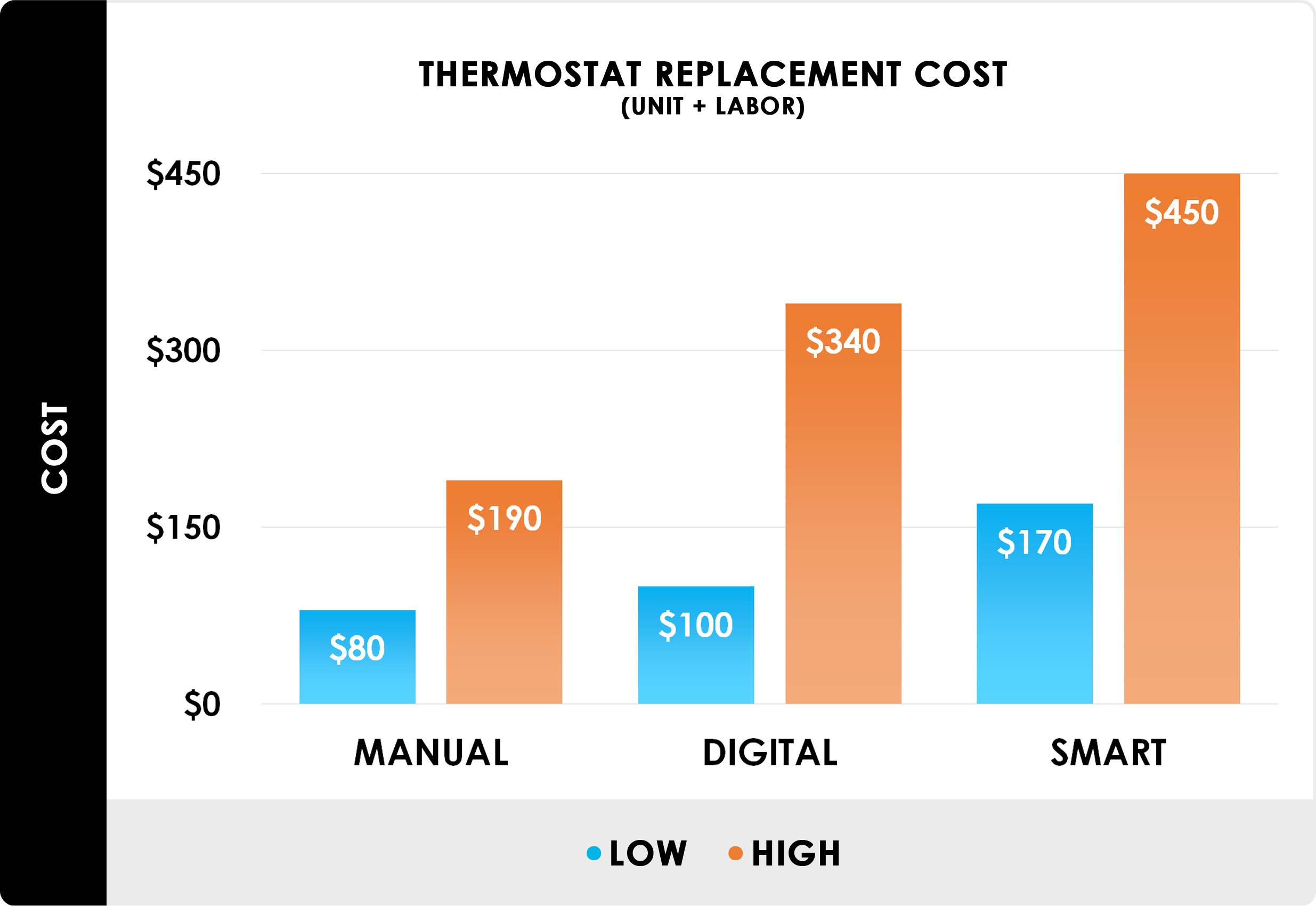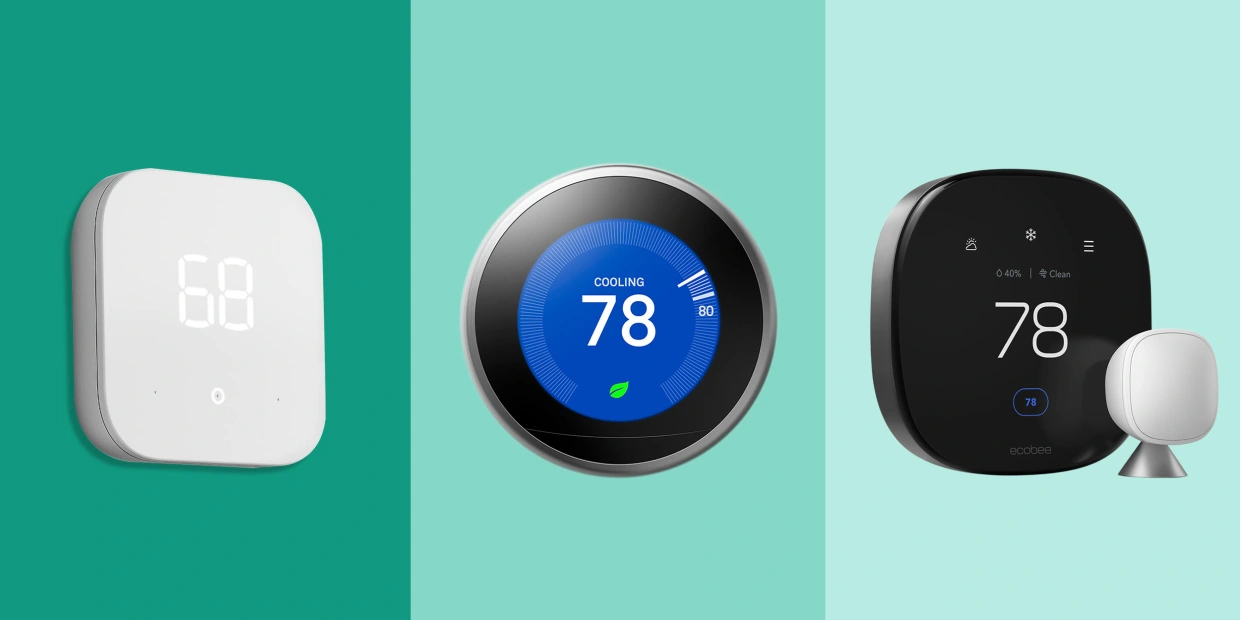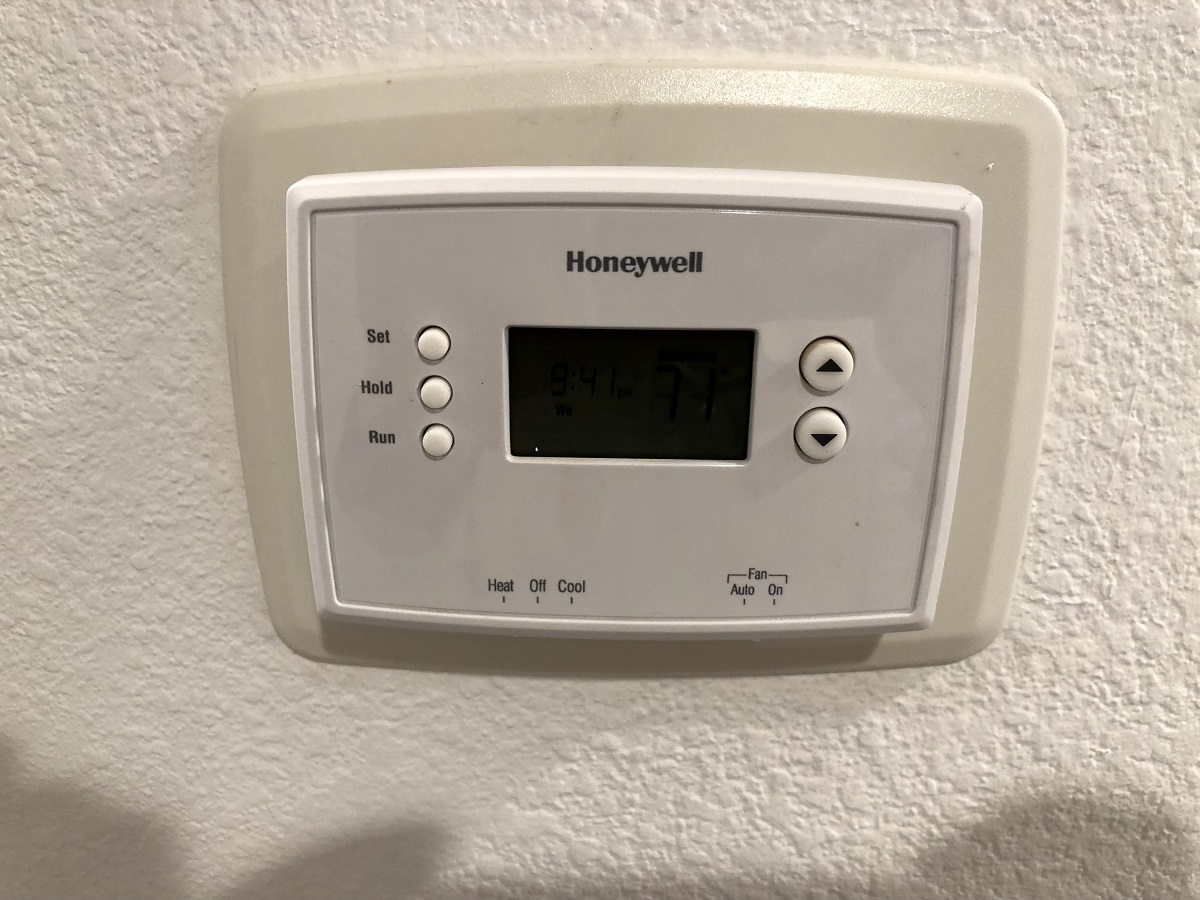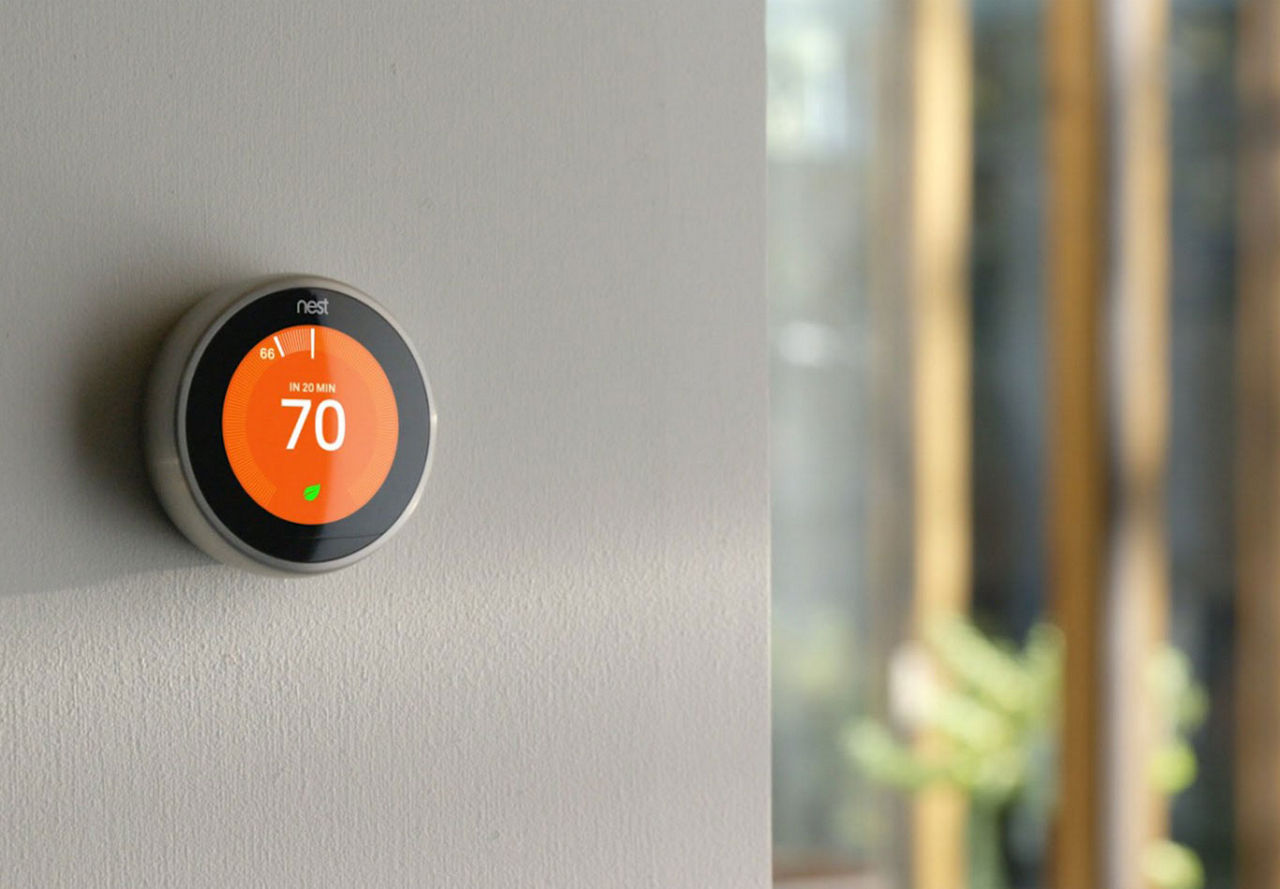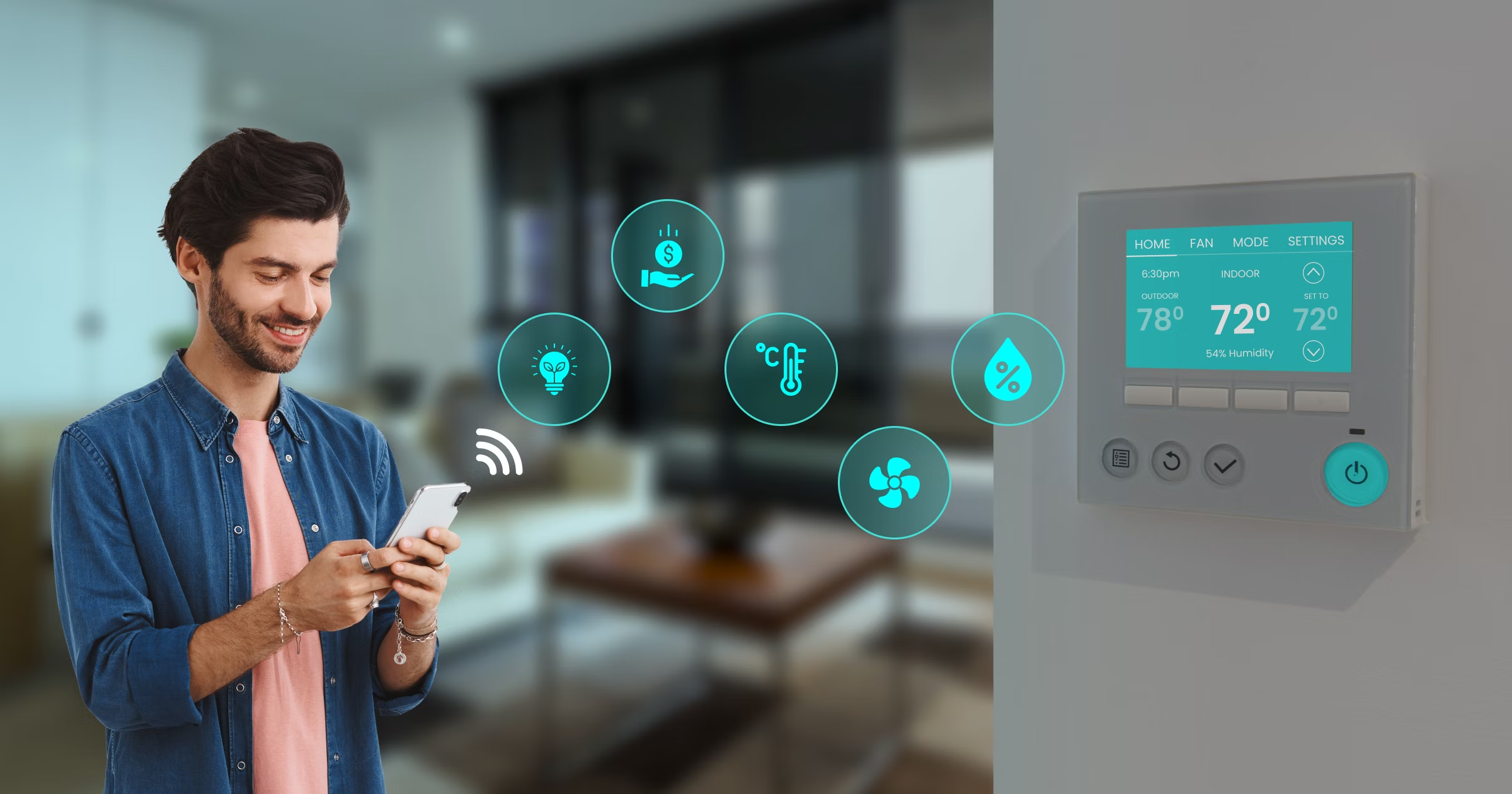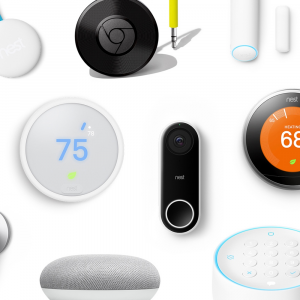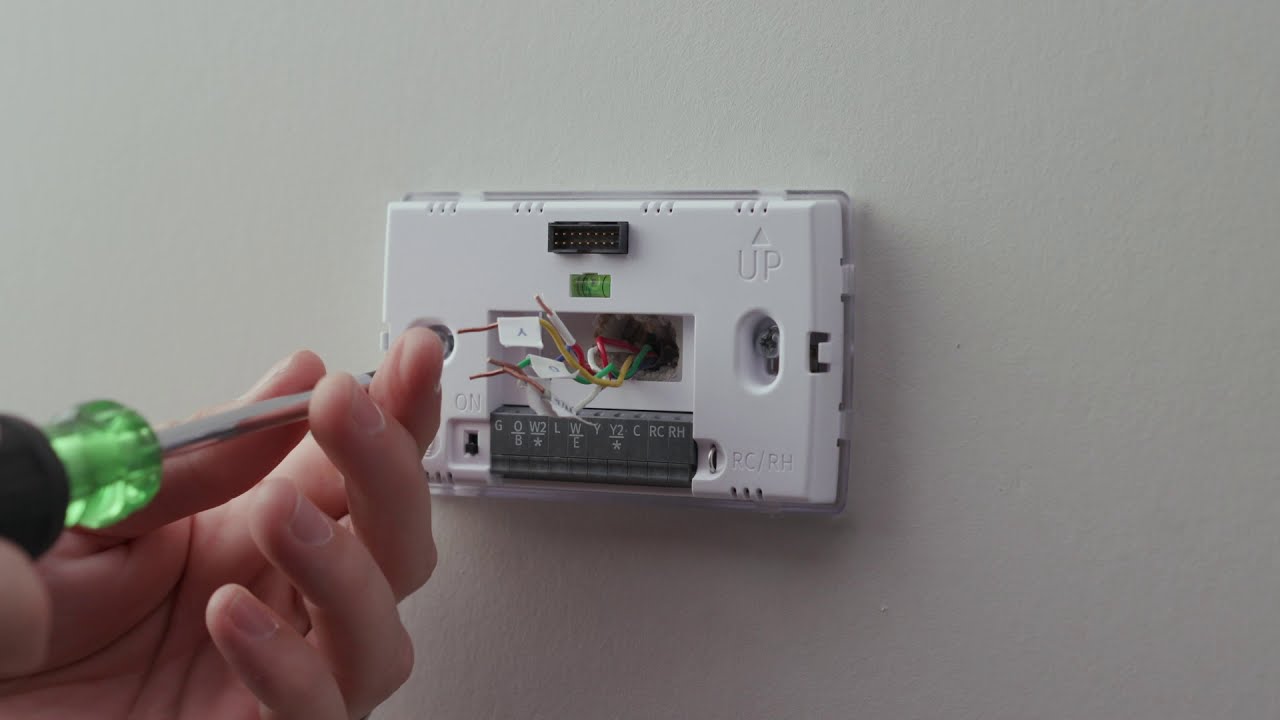Introduction
Thermostats are an essential part of any HVAC (Heating, Ventilation, and Air Conditioning) system, allowing homeowners to regulate and control the temperature of their homes. They serve as a crucial link between the occupants and the heating or cooling system, providing comfort and energy efficiency.
With technological advancements, thermostats have evolved from simple manual devices to sophisticated, programmable, and smart units that offer a range of features designed to enhance control and convenience. The wide array of options available in the market can make it overwhelming for homeowners to choose the right thermostat for their homes.
In this article, we will explore the different types of thermostats, including traditional thermostats, programmable thermostats, and smart thermostats. We will discuss the factors that influence the cost of thermostats and provide an average cost range to give you a better understanding of what to expect.
Whether you are building a new home or looking to upgrade your existing thermostat, understanding the different types and factors that contribute to the cost will help you make an informed decision.
So, let’s dive into the world of thermostats and explore the options available to ensure your home stays comfortable and energy-efficient throughout the year.
Different Types of Thermostats
Thermostats come in various types, each offering unique features and functionalities to meet different preferences and needs. Understanding the differences between these types will help you choose the one that best suits your requirements. The three main types of thermostats are traditional thermostats, programmable thermostats, and smart thermostats.
Traditional Thermostats:
Traditional thermostats are the most basic and commonly found type. They operate manually and allow you to adjust the temperature settings using a dial or slider. These thermostats do not offer any programming options but provide a simple and straightforward way to control the temperature in your home.
Programmable Thermostats:
Programmable thermostats offer more flexibility and control by allowing you to set temperature schedules in advance. This means you can program different temperature settings for different times, such as lowering the temperature when you are away from home and raising it before you return. This helps optimize energy usage and save on heating and cooling costs.
Programmable thermostats come with different programming options, ranging from simple seven-day models that allow you to set a different schedule for each day of the week to more advanced models with adaptive learning capabilities that adapt to your preferred settings over time.
Smart Thermostats:
Smart thermostats take comfort and control to the next level with advanced technology and connectivity features. These thermostats connect to your home’s Wi-Fi network, allowing you to control and monitor them remotely through a smartphone app or voice commands.
Smart thermostats offer a variety of features such as geofencing, learning algorithms, energy usage reports, and integration with home automation systems. They can also provide insights into your energy consumption, allowing you to make adjustments to save even more on your utility bills.
Furthermore, some smart thermostats can learn your temperature preferences and adjust the temperature automatically based on your behavior and occupancy patterns, ensuring optimal comfort while maximizing energy efficiency.
Now that we have explored the different types of thermostats, let’s dive deeper into the factors that can affect the cost of these devices.
Traditional Thermostats
Traditional thermostats, also known as manual thermostats, are the simplest and most basic type of thermostat available. They have been around for many years and are still commonly used in many households.
These thermostats typically consist of a dial or slider that allows you to adjust the temperature manually. You turn the dial or move the slider to the desired temperature setting, and the thermostat will maintain that temperature until you make a change.
One of the main advantages of traditional thermostats is their simplicity and ease of use. There are no complicated programming options or connectivity features to navigate. You can adjust the temperature as needed with just a simple twist or slide of a button.
Traditional thermostats are also typically more affordable compared to programmable or smart thermostats. Their basic functionality makes them a cost-effective option for homeowners who prefer a straightforward approach to temperature control.
However, traditional thermostats lack the advanced features and energy-saving capabilities found in programmable and smart thermostats. They do not have the ability to automatically adjust temperatures based on time of day or occupancy patterns. This means you need to manually adjust the temperature throughout the day, which may result in energy waste if you forget to make changes.
Despite their limitations, traditional thermostats can still effectively control the temperature in your home. They are a suitable option for individuals who prefer a simple and reliable thermostat without the need for complex programming or smart technology.
It’s important to note that traditional thermostats may not be the most energy-efficient option. Without advanced features to optimize energy usage, you may end up consuming more energy and incurring higher utility bills compared to programmable or smart thermostats.
In the next section, we will explore programmable thermostats and their benefits in terms of energy savings and convenience.
Programmable Thermostats
Programmable thermostats offer a significant upgrade from traditional thermostats by providing the ability to set temperature schedules in advance. These thermostats allow you to program different temperature settings for various times of the day, week, or even season.
One of the primary benefits of programmable thermostats is energy efficiency. By setting different temperature schedules based on your daily routines, you can automatically adjust the temperature when you’re away from home or asleep, saving energy and reducing utility costs.
Programmable thermostats typically come with multiple programming options. The most basic models offer a 7-day programming feature, where you can set a different schedule for each day of the week. This is particularly useful if you have different routines or preferences for weekdays and weekends.
More advanced programmable thermostats offer additional features like 5+2-day programming, where you can set a schedule for weekdays and another for the weekend. There are also 5-1-1 and 5-2 programming options available.
Some higher-end programmable thermostats include adaptive learning capabilities. These thermostats learn your temperature preferences and adjust the schedule automatically over time, ensuring optimal comfort while reducing energy consumption.
With a programmable thermostat, you have the flexibility to plan your heating and cooling needs in advance. For example, you can program the thermostat to lower the temperature during the day when no one is home and raise it just before you return.
In addition to energy savings, programmable thermostats offer convenience. You don’t have to constantly adjust the temperature manually as the thermostat will follow the programmed schedule throughout the day.
It’s important to note that programmable thermostats require installation and initial setup. Depending on the model and your HVAC system, you may need the assistance of a professional to ensure proper installation and programming.
Overall, programmable thermostats are an excellent choice for homeowners who want to save energy, reduce utility costs, and enjoy the convenience of pre-programmed temperature schedules.
Next, we will explore smart thermostats, which take comfort and control to the next level with advanced technology and connectivity features.
Smart Thermostats
Smart thermostats have revolutionized home temperature control with their advanced technology and connectivity features. These thermostats are designed to provide a higher level of comfort, convenience, and energy efficiency.
One of the key features of smart thermostats is their ability to connect to your home’s Wi-Fi network. This connectivity allows you to control and monitor your thermostat remotely through a smartphone app or even voice commands.
Smart thermostats offer a wide range of features and functionalities that make them stand out from traditional and programmable thermostats. Some of these features include:
- Remote Access: With a smart thermostat, you can control the temperature settings of your home from anywhere using your smartphone. This means you can adjust the temperature while you’re at work, on vacation, or just lounging on the couch.
- Learning Capabilities: Smart thermostats have the ability to learn your temperature preferences and habits over time. They can automatically adjust the temperature based on your behavior and occupancy patterns, maximizing comfort while minimizing energy usage.
- Integration with Home Automation: Smart thermostats can be integrated with other smart home devices and systems, such as lighting, security, and voice assistants. This allows you to create a seamless smart home ecosystem where all devices work together to enhance your comfort and convenience.
- Energy Usage Reports: Smart thermostats provide insights into your energy consumption, allowing you to track and monitor your heating and cooling usage. This information can help you make informed decisions and adjustments to optimize energy efficiency and reduce utility costs.
- Geofencing: Some smart thermostats utilize geofencing technology to automatically adjust the temperature based on your location. For example, when you leave your home, the thermostat can sense your absence and adjust the temperature to energy-saving levels. When you return, it can bring the temperature back to your preferred settings.
In addition to these features, smart thermostats often come with intuitive and user-friendly interfaces that make controlling and programming the thermostat a breeze. The ability to control your home’s temperature with just a few taps on your smartphone brings a new level of convenience and flexibility to your daily life.
However, it’s important to note that smart thermostats tend to be more expensive compared to traditional and programmable thermostats. The advanced technology and connectivity features contribute to the higher cost.
Despite the higher price tag, smart thermostats can provide substantial energy savings over time, which can help offset the initial investment. The added convenience and control they offer make them a popular choice among homeowners looking to upgrade their HVAC systems.
Now that we have explored the different types of thermostats and their features, let’s delve into the factors that can affect the cost of thermostats in the next section.
Factors Affecting the Cost of Thermostats
The cost of thermostats can vary depending on several factors. By understanding these factors, you can better gauge the pricing and choose a thermostat that fits your budget and needs. Here are the key factors that can affect the cost of thermostats:
Brand and Manufacturer: The brand and manufacturer of the thermostat play a significant role in determining its cost. Well-known and reputable brands often offer higher-priced thermostats due to their brand reputation and quality. However, it’s essential to balance brand recognition with the specific features and functionality you require.
Features and Technology: The features and technology incorporated into a thermostat contribute to its price. Basic thermostats with manual controls will generally be more affordable than advanced programmable or smart thermostats. Additional features like adaptive learning, energy reports, and voice control can increase the price of the thermostat.
Compatibility and Installation: The compatibility of the thermostat with your HVAC system can impact its cost. Some thermostats may require professional installation, which can add to the overall expense. For more complex systems or older homes, additional wiring or modifications may be necessary, increasing the installation cost.
Additional Costs: Keep in mind that there may be additional costs associated with purchasing and installing thermostats. These costs can include wiring, batteries, or any necessary accessories or adapters. It is essential to consider these additional expenses when budgeting for a new thermostat.
Integration and Home Automation: Smart thermostats that offer integration with other smart home devices or home automation systems may come at a higher price point. If you already have a smart home ecosystem or plan to expand your automation capabilities, investing in a compatible thermostat may be worthwhile.
Warranty and Support: The length and coverage of the warranty provided by the thermostat manufacturer can affect its price. Thermostats with longer warranties and comprehensive customer support services might come with a premium price, but they can offer peace of mind in terms of long-term reliability and assistance.
It’s important to carefully consider these factors and evaluate your specific requirements when choosing a thermostat. It’s not always necessary to opt for the most expensive model, as it may include features that you don’t need. Conversely, going for the cheapest option may result in sacrificing important features and functionality.
By understanding the factors that affect thermostat pricing, you can make an informed decision that strikes a balance between cost and value. When comparing different thermostat options, consider the specific features, compatibility, and overall value they offer.
Now, let’s move on to discussing the average cost range of thermostats in the following section.
Brand and Manufacturer
When it comes to thermostats, the brand and manufacturer play a significant role in determining both the quality and the cost of the device. The reputation and recognition of the brand can often translate into a higher price tag, but it’s important to consider the value and specific features offered by different brands.
Well-known and reputable brands in the HVAC industry, such as Nest, Honeywell, Ecobee, and Emerson, are often associated with high-quality products and advanced technology. These brands invest heavily in research and development, ensuring that their thermostats are equipped with the latest features and reliable performance.
The reputation of a brand can provide assurance of product quality, durability, and customer support. However, it doesn’t necessarily mean that a more expensive thermostat from a renowned brand is the best choice for everyone. It’s essential to consider your specific needs and requirements when evaluating different brands.
Smaller or lesser-known brands can offer more affordable options without compromising on functionality. These brands may be more focused on providing budget-friendly options or targeting specific market segments. While they may not have the same level of recognition as larger brands, they can still offer reliable and feature-rich thermostats that meet your needs.
It’s worth noting that brand recognition and reputation can also factor into long-term support and warranty services. Established brands often provide comprehensive customer support, extended warranties, and regular software updates for their thermostats.
When considering a specific brand, it’s recommended to research customer reviews and ratings to get an idea of the overall satisfaction and reliability of their thermostats. Additionally, compare the features and functionality offered by different brands, as well as the compatibility with your HVAC system and any home automation setup you may have.
While brand and reputation can influence the cost of thermostats, it’s important to remember that the most expensive option is not always the best choice for everyone. Consider your specific needs, budget, and desired features when making a decision.
Now that we have explored the impact of brand and manufacturer on thermostat cost, let’s move on to discussing the various features and technologies that can affect pricing.
Features and Technology
When it comes to thermostats, the range of features and technology incorporated into the device can significantly influence its cost. Different features and technologies offer varying levels of convenience, energy efficiency, and customization options, making them important considerations when evaluating thermostat options.
Here are some key features and technologies commonly found in thermostats:
Programmability: Thermostats with programmable capabilities allow you to set temperature schedules in advance. This feature enables you to automatically adjust the temperature at different times of the day or week, optimizing energy usage and comfort. The level of programmability can vary, with some thermostats offering 7-day scheduling while others offer more advanced options, such as adaptive learning.
Smart Connectivity: Smart thermostats are equipped with Wi-Fi connectivity, enabling remote access and control through smartphone apps or voice assistants. This feature allows you to adjust and monitor the thermostat from anywhere, providing convenience and flexibility in managing your home’s temperature.
Learning Algorithms: Some thermostats have built-in learning algorithms that adapt to your temperature preferences and occupancy patterns. They learn from your interactions and automatically adjust temperature settings accordingly, ensuring optimal comfort and energy efficiency. This feature enhances convenience and helps reduce energy waste through personalized temperature control.
Energy Usage Reports: Many advanced thermostats provide detailed energy usage reports and analytics. These reports provide insights into your heating and cooling patterns, allowing you to identify energy-saving opportunities and make informed decisions to optimize energy efficiency. Energy reports can help track and manage your energy consumption, leading to potential cost savings over time.
Voice Control: Several thermostats are compatible with popular voice assistants, such as Amazon Alexa or Google Assistant. This feature enables hands-free control of your thermostat through voice commands, providing convenience and ease of use.
Geofencing: Geofencing technology utilizes your smartphone’s location to automatically adjust the temperature when you leave or enter your home. This ensures that your HVAC system operates efficiently and can help save energy by reducing unnecessary heating or cooling when you’re away.
Integration with Home Automation: Some thermostats offer integration with other smart home devices or home automation systems. This allows for seamless communication between different devices, enhancing the overall functionality and control of your smart home ecosystem. Integration can include features like syncing with lighting systems, security systems, and more.
Advanced features like adaptive learning, energy reports, and voice control often come with a higher price tag due to the additional technology and complexity involved. However, it’s important to consider which features are essential for your specific needs and lifestyle.
When selecting a thermostat, evaluate the features and technologies offered by different models and determine which ones align with your preferences and requirements. It’s also crucial to ensure compatibility between the thermostat and your HVAC system or any other connected devices you may have.
Now that we have discussed the impact of features and technology on thermostat cost, let’s explore another factor that affects the overall expense: compatibility and installation.
Compatibility and Installation
When considering a new thermostat, it’s crucial to take into account its compatibility with your existing HVAC system and the installation process involved. Compatibility and installation factors can significantly affect both the cost and feasibility of upgrading to a new thermostat.
Thermostats come in various types and models, and not all of them are compatible with every HVAC system. It’s essential to ensure that the thermostat you choose is compatible with your specific heating and cooling system.
Compatibility considerations include the type of HVAC system you have, whether it’s a single-stage, multi-stage, or heat pump system. Additionally, some thermostats have specific compatibility requirements with regard to voltage, wiring, and other system specifications. If a thermostat is incompatible with your HVAC system, it may not function properly or may require additional wiring or modifications.
Professional installation may be necessary for certain thermostat models or more complex HVAC systems. While some thermostats are relatively easy to install on your own, others may require professional assistance to ensure proper wiring, configuration, and calibration.
Professional installation can come with an additional cost, which you should factor into your budget when considering a new thermostat. It’s worth noting that professional installation can help ensure the optimal functioning and performance of your thermostat, as well as provide warranty coverage. Additionally, professional installers have the knowledge and experience to handle any technical challenges that may arise during the installation process.
Even if you are capable of installing the thermostat yourself, it’s recommended to consult the manufacturer’s instructions and guidelines to ensure a proper installation. This can help avoid any potential issues and ensure that the thermostat functions correctly.
Compatibility and installation factors are essential considerations to ensure a seamless integration of your new thermostat with your HVAC system. By verifying compatibility and, if necessary, seeking professional installation, you can avoid potential pitfalls and ensure the smooth operation of your thermostat.
In the next section, we will discuss additional costs that may be associated with purchasing and installing a thermostat.
Additional Costs
When purchasing and installing a new thermostat, there may be additional costs to consider beyond the initial purchase price. These additional expenses can vary depending on the specific circumstances and requirements of your installation. It’s important to be aware of these potential costs to budget accordingly.
Wiring: Depending on the type of thermostat you choose and the compatibility with your existing HVAC system, you may need to consider wiring requirements. Some thermostats may require additional wiring or modification to ensure proper connectivity and functionality. If you’re unsure about the wiring process, it’s recommended to consult a professional installer who can evaluate and address any wiring needs.
Batteries: Certain thermostats, especially those that are not hardwired to your HVAC system, require batteries for power. It’s important to factor in the cost of batteries and their potential replacement over time. Battery life can vary depending on usage and the specific thermostat model, so it’s a good idea to check the estimated battery life provided by the manufacturer.
Accessories and Adapters: Depending on your HVAC system and the specific thermostat model you choose, you may need to purchase additional accessories or adapters. These can include mounting plates, trim plates, or connectors that facilitate the installation process and ensure compatibility. It’s important to carefully review the product specifications and consult the manufacturer guidelines to determine if any additional accessories or adapters are required.
Professional Installation: While some thermostats can be easily installed by homeowners themselves, others may require professional installation. This can be particularly true for more complex HVAC systems or situations where additional wiring or modifications are needed. Professional installation ensures proper setup, configuration, and calibration of the thermostat, ensuring optimal functionality. It’s recommended to obtain quotes from professional installers to understand the costs involved and ensure a seamless installation process.
Extended Warranties: Manufacturers may offer extended warranty options for their thermostats. These warranties typically provide coverage beyond the standard warranty period, offering additional protection and peace of mind. While extended warranties can come with an extra cost, they may be worthwhile for those who prefer additional coverage and long-term support.
It’s important to carefully evaluate these potential additional costs when budgeting for a new thermostat. Depending on your specific situation, some of these costs may apply, while others may not be relevant. Taking into account these additional expenses will help you make an informed decision and avoid any unexpected financial burdens.
Next, we will explore the average cost range of thermostats to provide you with a better understanding of what to expect when budgeting for a new thermostat.
Average Cost of Thermostats
The cost of thermostats can vary widely depending on factors such as brand, features, technology, and compatibility. It’s important to have a general idea of the average cost range to help you establish a budget and make an informed decision.
On the lower end of the cost spectrum, traditional thermostats can range from around $20 to $50. These manual thermostats offer basic temperature control without any advanced features or connectivity options.
Programmable thermostats are typically priced between $50 and $150. The specific price can vary depending on the level of programmability, such as 7-day or adaptive learning capabilities. More advanced programmable thermostats with additional features like energy reports and Wi-Fi connectivity may fall at the higher end of this range.
Smart thermostats tend to have a higher price range, typically starting from around $100 and going up to $300 or more. The price variation is influenced by the brand, features, and connectivity options. Premium smart thermostats with advanced capabilities, compatibility with multiple smart home systems, and energy-saving features may be at the higher end of the price range.
It’s important to note that these are general price ranges, and specific models may fall outside of these averages. Some luxury or high-end thermostats with unique design elements or exclusive features can exceed the $300 mark.
In addition to the cost of the thermostat itself, it’s important to consider the potential additional costs we previously discussed, such as wiring, batteries, accessories, or professional installation. These extra costs can vary depending on your specific requirements and circumstances.
When budgeting for a new thermostat, it’s recommended to assess your priorities and needs. Consider the features and technology you desire, evaluate compatibility with your HVAC system, and factor in any potential additional costs. It’s also helpful to read customer reviews and compare different models to find the best balance between price and functionality.
Now that we have explored the average cost range of thermostats, let’s conclude by summarizing the key points covered in this article.
Conclusion
Choosing the right thermostat for your home is an important decision that can impact both your comfort and energy efficiency. Understanding the different types of thermostats, including traditional thermostats, programmable thermostats, and smart thermostats, can help you make an informed choice.
Traditional thermostats offer simplicity and affordability but lack advanced features and energy-saving capabilities. Programmable thermostats provide the flexibility of setting temperature schedules in advance, optimizing energy usage and convenience. Smart thermostats take comfort and control to a new level with features like remote access, learning algorithms, and integrations with other smart home devices.
The cost of thermostats can be influenced by several factors, including brand and manufacturer, features and technology, compatibility, and installation requirements. It’s important to find the right balance between cost, functionality, and compatibility with your HVAC system.
Additional costs associated with purchasing and installing thermostats, such as wiring, batteries, and professional installation, should also be considered when budgeting for a new thermostat.
The average cost range for thermostats varies depending on the type and features, with traditional thermostats typically ranging from $20 to $50, programmable thermostats ranging from $50 to $150, and smart thermostats ranging from $100 to $300 or more.
By considering all these factors and options, you can select a thermostat that suits your needs, enhances your comfort, and improves your energy efficiency. Whether you prefer a basic manually operated thermostat, a programmable one for tailored schedules, or a smart thermostat with advanced features and connectivity, the right thermostat can make a significant difference in your home.
Remember to consult user reviews and seek professional advice, where necessary, to ensure a successful installation and optimal performance of your chosen thermostat. Upgrade your home’s temperature control system today and enjoy the benefits of improved comfort and energy savings.







